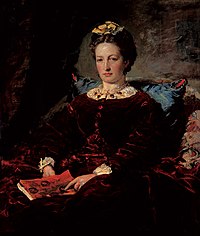
Sir John Everett Millais, 1st Baronet was an English painter and illustrator who was one of the founders of the Pre-Raphaelite Brotherhood. He was a child prodigy who, aged eleven, became the youngest student to enter the Royal Academy Schools. The Pre-Raphaelite Brotherhood was founded at his family home in London, at 83 Gower Street. Millais became the most famous exponent of the style, his painting Christ in the House of His Parents (1849–50) generating considerable controversy, and he produced a picture that could serve as the embodiment of the historical and naturalist focus of the group, Ophelia, in 1851–52.
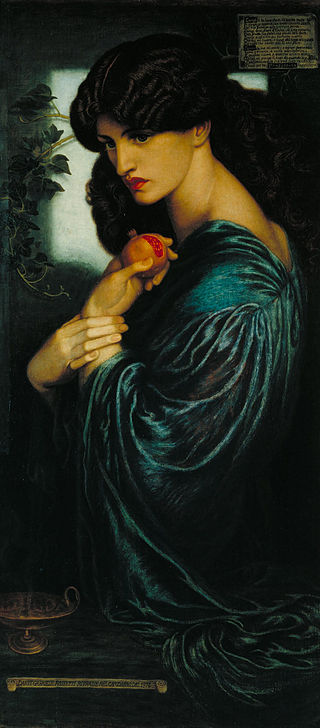
The Pre-Raphaelite Brotherhood was a group of English painters, poets, and art critics, founded in 1848 by William Holman Hunt, John Everett Millais, Dante Gabriel Rossetti, William Michael Rossetti, James Collinson, Frederic George Stephens and Thomas Woolner who formed a seven-member "Brotherhood" partly modelled on the Nazarene movement. The Brotherhood was only ever a loose association and their principles were shared by other artists of the time, including Ford Madox Brown, Arthur Hughes and Marie Spartali Stillman. Later followers of the principles of the Brotherhood included Edward Burne-Jones, William Morris and John William Waterhouse.
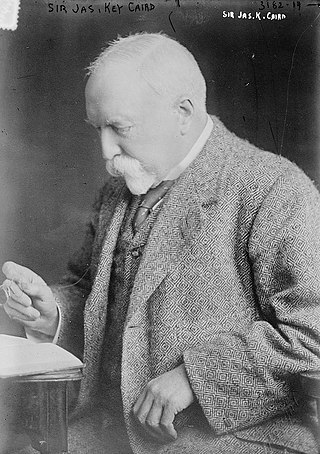
Sir James Key Caird, 1st Baronet was a Scottish jute baron and mathematician. He was one of Dundee's most successful entrepreneurs, who used the latest technology in his Ashton and Craigie Mills.

Ophelia is an 1851–52 painting by British artist Sir John Everett Millais in the collection of Tate Britain, London. It depicts Ophelia, a character from William Shakespeare's play Hamlet, singing before she drowns in a river.
Events from the year 1854 in art.

The Order of Release, 1746 is a painting by John Everett Millais exhibited in 1853. It is notable for marking the beginnings of Millais's move away from the highly medievalist Pre-Raphaelitism of his early years. Effie Gray, who later left her husband John Ruskin for Millais, modelled for the female figure.

Autumn Leaves (1856) is a painting by John Everett Millais exhibited at the Royal Academy in 1856. It was described by the critic John Ruskin as "the first instance of a perfectly painted twilight." Millais's wife Effie wrote that he had intended to create a picture that was "full of beauty and without a subject".
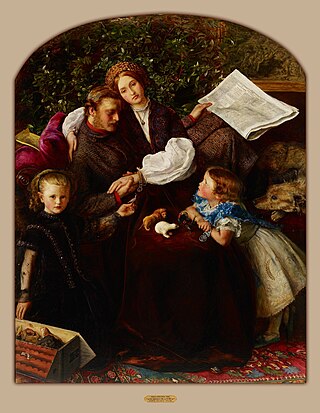
Peace Concluded, 1856 (1856) is a painting by John Everett Millais which depicts a wounded British officer reading The Times newspaper's report of the end of the Crimean War. It was exhibited at the Royal Academy in 1856 to mixed reviews, but was strongly endorsed by the critic John Ruskin who proclaimed that in the future it would be recognised as "among the world's best masterpieces". The central figure in the painting is a portrait of Millais's wife Effie Gray, who had previously been married to Ruskin. It is now in the Minneapolis Institute of Arts.
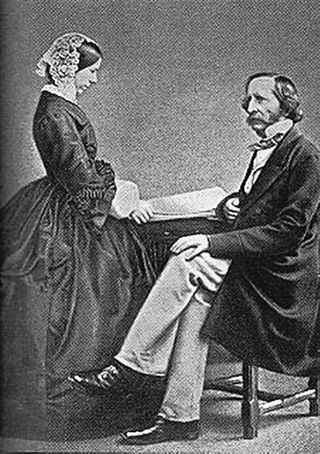
Pauline, Lady Trevelyan was an English painter, noted for single-handedly making Wallington Hall in Northumberland a centre of High Victorian cultural life, and for enchanting with her intellect and art John Ruskin, Swinburne, Elizabeth Barrett Browning, Robert Browning, Christina Rossetti, Dante Gabriel Rossetti, William Michael Rossetti, Thomas Carlyle, John Everett Millais, and other members of the Pre-Raphaelite Brotherhood. She was married in May 1835 to Sir Walter Calverley Trevelyan, 6th Baronet.
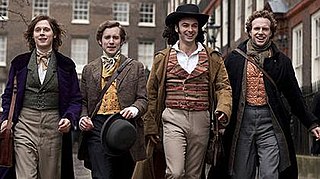
Desperate Romantics is a six-part television drama serial about the Pre-Raphaelite Brotherhood, first broadcast on BBC Two between 21 July and 25 August 2009.

John Ruskin is a portrait of the leading Victorian art critic John Ruskin (1819–1900). It was painted by the Pre-Raphaelite artist John Everett Millais (1829–1896) during 1853–54. John Ruskin was an early advocate of the Pre-Raphaelite group of artists and part of their success was due to his efforts.
Robin Brooks is a British radio dramatist, some-time actor and author.

The Vale of Rest (1858–1859) is a painting by the English Pre-Raphaelite artist John Everett Millais. It depicts a twilight graveyard scene and prominently features two nuns.
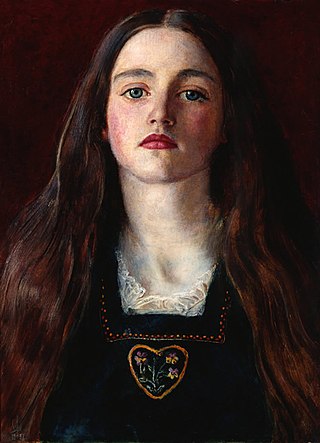
Sophia Margaret "Sophie" Gray, later Sophia Margaret Caird, was a Scottish model for her brother-in-law, the Pre-Raphaelite painter John Everett Millais. She was a younger sister of Euphemia "Effie" Gray, who married Millais in 1855 after the annulment of her marriage to John Ruskin. The spelling of her name was, after around 1861, sometimes "Sophy," but only within the family. In public she was known as Sophie and later in life, after her marriage, as Sophia.
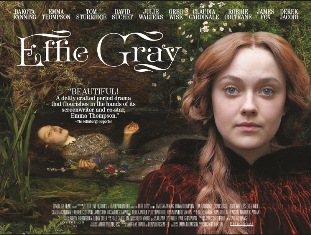
Effie Gray is a 2014 British biographical film written by Emma Thompson and directed by Richard Laxton, starring Dakota Fanning, Emma Thompson, Julie Walters, David Suchet, Derek Jacobi, James Fox, Claudia Cardinale, Greg Wise, Tom Sturridge, and Robbie Coltrane, in his final film appearance before his death in 2022. It is based on the true story of John Ruskin's marriage to Euphemia Gray and the subsequent annulment of their marriage.
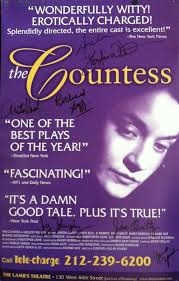
The Countess is a play written by the American playwright and novelist Gregory Murphy. It recounts the break-up of the marriage of John Ruskin and Effie Gray, one of the greatest scandals of the Victorian era in Britain.
Suzanne Elizabeth Fagence Cooper is a British non-fiction writer who has written extensively on the Pre-Raphaelites and Victorian women.

Kinnoull Parish Church is a Church of Scotland church in the Kinnoull area of Perth, Perth and Kinross, Scotland. A Kinnoull Church appears in documents when it was granted to Cambuskenneth Abbey in 1361. It was rebuilt in 1779 but demolished in 1826 after the completion of a church on the Perth side of the River Tay, which flows a short distance behind the church.

Bowerswell is an early-19th-century house on Bowerswell Road, Kinnoull, Scotland. It is a Grade B listed building and was the childhood home of Effie Gray; she and John Ruskin were married there in 1848.



